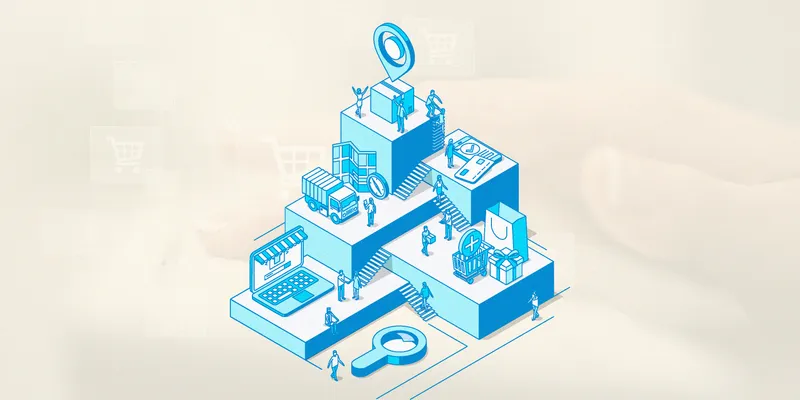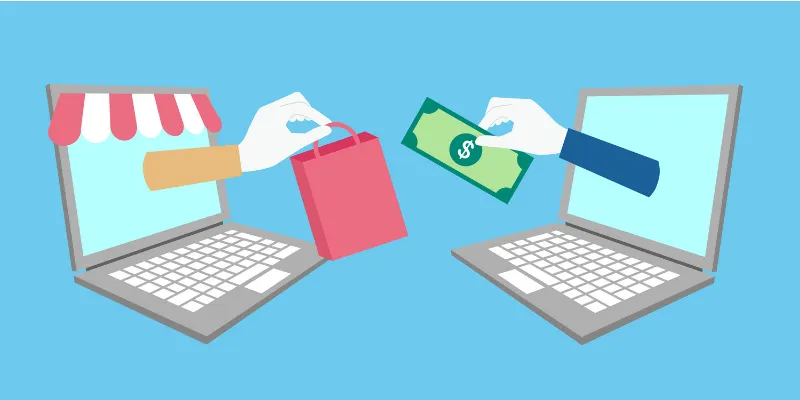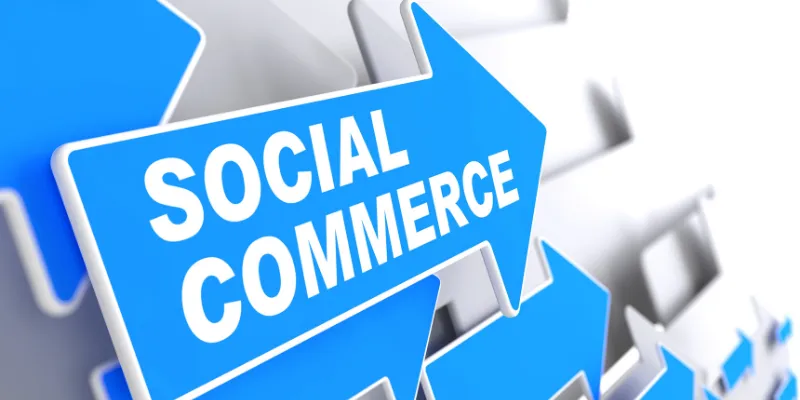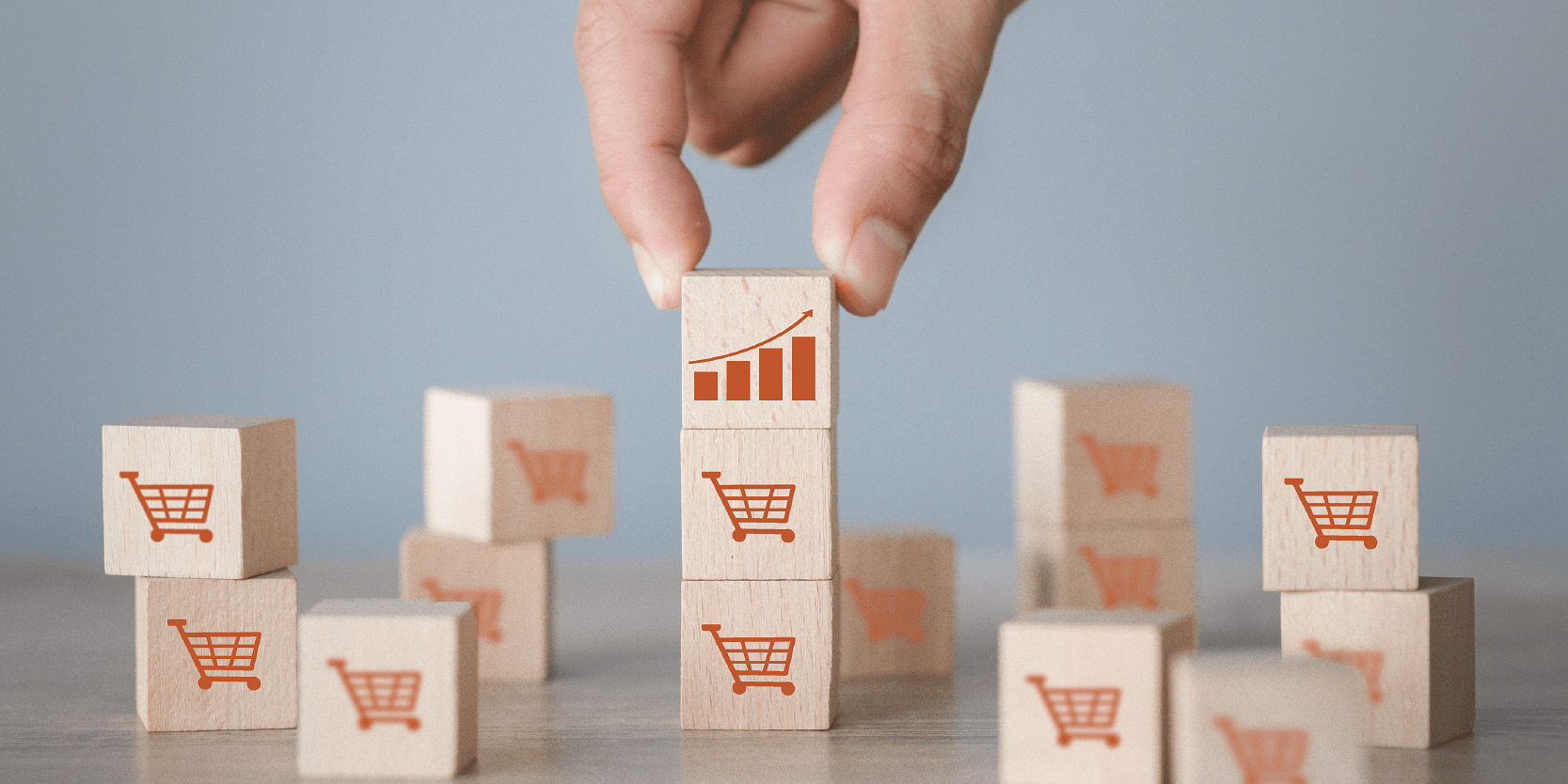India’s digital commerce story is poised at an exciting juncture, with huge growth potential amid the emergence of new categories, business models, and companies, even as established firms consolidate their market share.
Domination of Walmart-owned Flipkart and Amazon in horizontal ecommerce has not saturated, rather expanded the scope of digital commerce in the country, with direct-to-consumer (D2C) brands and social commerce finding favour with consumers. This leaves the door open for more experiments in the sector and allow the entry of even newer participants.
For instance, Reliance has launched its digital marketplace with Jio, while the Tatas are getting ready with a super app after acquiring a majority stake in grocery unicorn BigBasket in a deal valued at $1.2 billion.

Moreover, the COVID-19 pandemic spurred a major consumer shift to online, with many conducting their first transactions on digital commerce platforms in the last year or so as physical stores closed temporarily and people started avoiding public places.
At a recent conference, Flipkart Group CEO Kalyan Krishnamurthy laid out the growth trends in ecommerce.
“The pre-COVID growth rates of ecommerce were roughly 26-27 percent, but if you look at a post-COVID estimate, it has gone closer to 30 percent,” he said. “In the next few years, we believe the Indian ecommerce ecosystem will be bigger than what we term as modern trade today.”
Satish Meena, senior forecast analyst at Forrester, says: “COVID has given a push to online transactions and people are buying into newer categories. We will see more experiments in this segment.”
Digital commerce, he says, is very vibrant in India as it accounts for only around four per cent of the overall retail market.
As of last year, 150 million people in India were transacting on digital commerce channels, out of the country’s internet user base of 700 million, shows data culled from several reports. This indicates the headroom for internet user growth and, hence, new digital commerce customers.
The D2C turn
D2C brands are one of the most promising segments in India’s digital commerce landscape, as they have made their presence felt alongside corporate heavyweights in the sector.
Investment banking firm Avendus Capital said in its report on D2C brands in October that India is projected to have more than 3,000 such brands, with their market size expected to touch $100 billion by 2025. At present, there are around 600 D2C brands in the country, said the report.
D2C brands typically use various digital media channels to create a niche for their products. Apart from selling on their own platforms, their products are available on large ecommerce marketplaces — a strategy quite a few are expected to continue with.
“For D2C brands, customer acquisition is a challenge,” says Sridhar Rajaram, Founder of business consultancy Upaghna Ventures, which helps D2C brands grow. “There are several advantages for them to sell through their own channels as compared to doing so on an ecommerce aggregator, where they have to pay a commission.”

The other advantage for D2C brands to sell on their own platforms, he says, is being able to leverage customer data, which they can use to up-sell and cross-sell. “They have control over the lifetime value of the customer.”
Aman Gupta, Founder of D2C audio accessories brand boAT Lifestyle, says: “This year selling through our site will be an extension for our ‘boAthead’ community. Our website has a new experience for that community and anyone looking to buy directly from the BoAt website. However, we will continue to work with large ecommerce companies and expand our brick-and-mortar strategy.”
Wow Skin Science Co-founder Manish Chowdhury too is looking at a dual sales strategy.
“Amazon has taken us global. We have grown significantly on the platform over the last five years,” he says. “Global personal care is a huge business. Brands will use their own ecommerce sites and will work with ecommerce aggregators too. However, the opportunity to curate products and understand customers happens on a brand’s website because it has a large customer base giving feedback on the product.”
These are early days yet for D2C brands in the country, given low entry barriers to build a brand online, but a different ball game if one is looking to scale.
“For a D2C brand to reach an initial critical mass is not very challenging, but to get the volumes after this becomes difficult,” says Ankur Bisen, Senior Vice President-Retail and Consumer Products at management consultancy Technopak.
Bisen says that beyond a point, D2C brands need to have a multi-channel approach. “One cannot be only a D2C channel to grow in scale.”
Social commerce makes inroads
Social commerce is another digital commerce segment that is carving a niche for itself in India.
As the name suggests, social commerce entities rely on social media channels WhatsApp, Instagram, Pinterest, and others to connect with consumers and sell their products.
Quoting a Bain & Company report, earlier this month the India Brand Equity Foundation (IBEF) said in a note on social commerce that gross merchandise value for the segment was estimated at $2 billion in 2020 and is projected to reach $16-20 billion by 2025 and $60-70 billion by 2030.
The note also cited the report as saying that the share of social commerce in India’s ecommerce market, worth $38 billion last year, is expected to rise from 1-2 percent at present to 4-5 percent of the projected $140-billion market by 2025.

“Social commerce is evolving as a new communication channel and transaction model for small and midsized companies, as it allows efficient online product discovery and easier conversation with brands,” IBEF said in the note.
Companies such as Meesho and DealShare are prominent in the social commerce segment, which is also attracting investor interest. In fact, Meesho counts Facebook as one of its investors.
With active social media users in India expected to grow to 448 million by 2023 from 330 million in 2019, according to IBEF, the potential is huge for social commerce.
Dynamic days ahead
Rapidly changing requirements of consumers are expected to drive the growth of digital commerce in India and fuel the emergence of new business models.
“There is so much happening and it has pushed people to think differently,” says Bisen. “However, I believe there is a need to address the opportunity gap of the semi-urban and rural market.”
India’s retail market is estimated in the range of $800 billion to $1 trillion, in which the unorganised sector has an overwhelming share of around 80 percent, with modern large format retail and ecommerce accounting for the rest, according to multiple reports.
These dynamics are expected to change in the years ahead, with the emergence of several permutations and combinations. For example, kirana stores or small retail outlets are increasingly getting digitised alongside large retail chains.
According to Forrester Research, ecommerce sales in India increased 7-8 percent in 2020 and its market is projected somewhere between $100 billion and $140 billion by 2025, according to various estimates. Also, the number of online shoppers in the country is expected to cross 250 million by 2022, says consulting firm RedSeer.
“As you have more and more online buyers in the market, there is a lot of space for experimentation as each consumer has different requirements,” says Meena from Forrester.
Given these trends and estimates, D2C brands and social commerce are expected to play an important role in the growth of digital commerce in the country.






![Read more about the article [Funding alert] EV startup REVOS raises $4M Series A investment, aims to be ‘Android for EVs’](https://blog.digitalsevaa.com/wp-content/uploads/2021/09/Imagec3n0-1630510577586-300x150.jpg)



